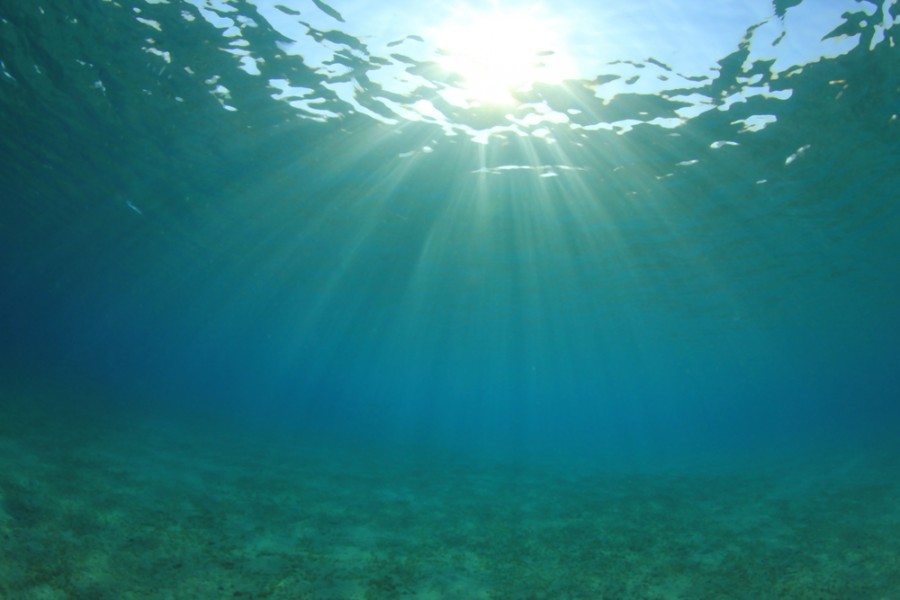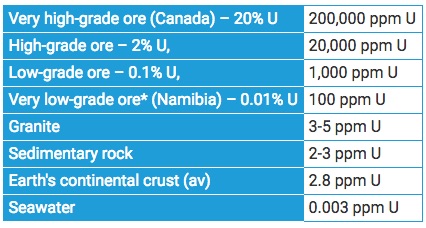
The uranium that seeped into the ocean through crippled nuclear reactors at Fukushima Daiichi in 2011 was universally condemned as the egregious result of a nuclear meltdown. The “radiation plume” that became a Youtube sensation was later denounced as a hoax, but concerns reached as far as the North American west coast as to how far the radioactive isotopes had travelled by ocean currents. To this day authorities in Japan regularly test the fish caught off the shores of Japan for levels deemed safe for human consumption.
But what if that same uranium could be somehow harnessed and brought back into the nuclear fuel cycle? For the past five years scientists at the U.S. Department of Energy have been examining that question. The DOE notes that in the 1990s, the Japan Atomic Energy Agency pioneered materials that hold uranium as it is stuck or adsorbed onto surfaces of the material submerged in seawater.
In 2011 the DOE put together a team from U.S. national laboratories, universities and research institutes to address the challenges of economically extracting uranium from seawater. Now, the team has developed new adsorbents that reduce the cost of extracting uranium from seawater by three to four times, according to the energy department, which first released their results in April.
The DOE explains the technology and results in a press release from the DOE’s Oakridge National Laboratory:
That teamwork culminated in the creation of braids of polyethylene fibers containing a chemical species called amidoxime that attracts uranium. So far, testing has been conducted in the laboratory with real seawater; but the braids are deployable in oceans, where nature would do the mixing, avoiding the expense of pumping large quantities of seawater through the fibers. After several weeks, uranium oxide–laden fibers are collected and subjected to an acidic treatment that releases, or desorbs, uranyl ions, regenerating the adsorbent for reuse. Further processing and enriching of the uranium produces a material to fuel nuclear power plants.
Marine testing at PNNL showed an ORNL adsorbent material had the capacity to hold 5.2 grams of uranium per kilogram of adsorbent in 49 days of natural seawater exposure—the crowning result presented in the special issue (published in the journal Industrial & Engineering Chemistry Research).
How much uranium is in the ocean? According to the DOE press release the oceans hold more than four billion tons of uranium— “enough to meet global energy needs for the next 10,000 years if only we could capture the element from seawater to fuel nuclear power plants.” While that sounds like a lot of potential nuclear fuel, a quick check of the World Nuclear Association website shows that uranium concentrations in seawater are significantly lower than those found on land. The real challenge, therefore, would be extracting the uranium economically at such low parts per million.
For example uranium exists in the Earth’s continental crust in concentrations of 2.8 parts per million, versus 0.003 parts per million in seawater. The highest-grade uranium ore, for example in Saskatchewan’s Patterson Lake region, has concentrations of 200,000 parts per million. The World Nuclear Association estimates there is a total of 5.9 million tonnes of uranium available, none of it presumably calculated from seawater; the four largest producers, in descending order, are Australia, Kazakhstan, Russia and Canada.

Supply of uranium. Graphic from the World Nuclear Association.
In 2014 a team of German geochemists found a way to extract rare earth metals from the solid nodes of iron and manganese found strewn across much of the deep ocean floor.
The nodules, called ferromanganese deposits, build slowly over time as dissolved iron and manganese in seawater attaches to seafloor sediments.
Researchers claimed they were able to extract up to 80% of four rare earth metals from ferromanganese nodules by refining their ore-leaching method.
3 Comments
winkieone
Lake Athabasca would be a good test reagin for this technology, one of, if not the highest, lake concentrations of Uranium in Canada….
goldfinger
A good place to test this is out side of Fukushima. In a couple of months you will pick up enough uranium to power Japan for a couple of years.
Jag_Levak
The amount of uranium released from Fukushima might have been as much as a few grams–utterly negligible compared to the billions of tons of uranium in the oceans. The problematic contaminant leakage was predominantly radioisotopes of iodine, cesium, and strontium.